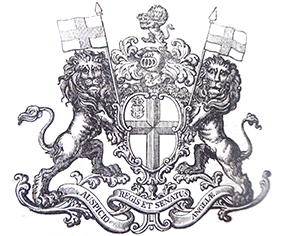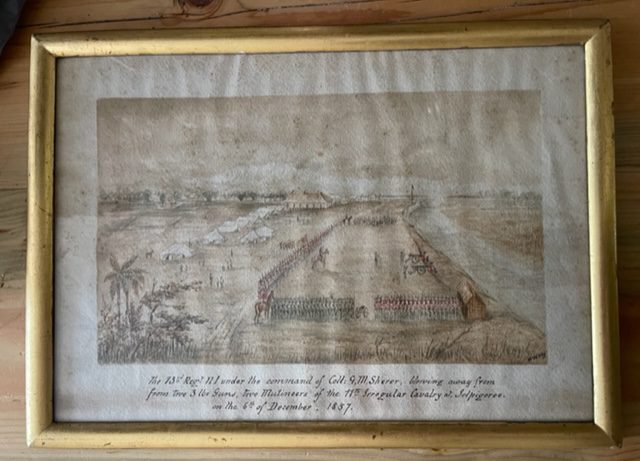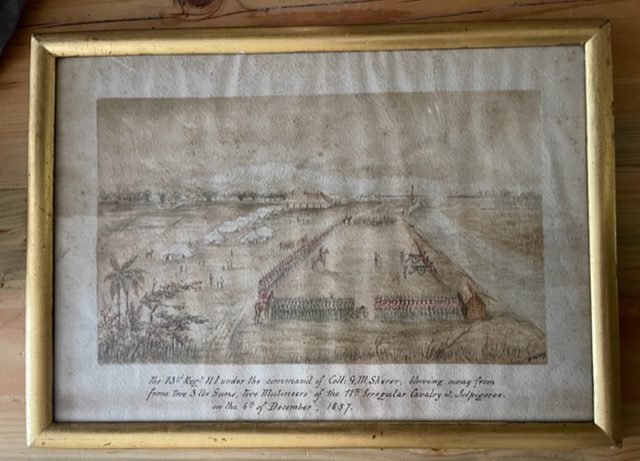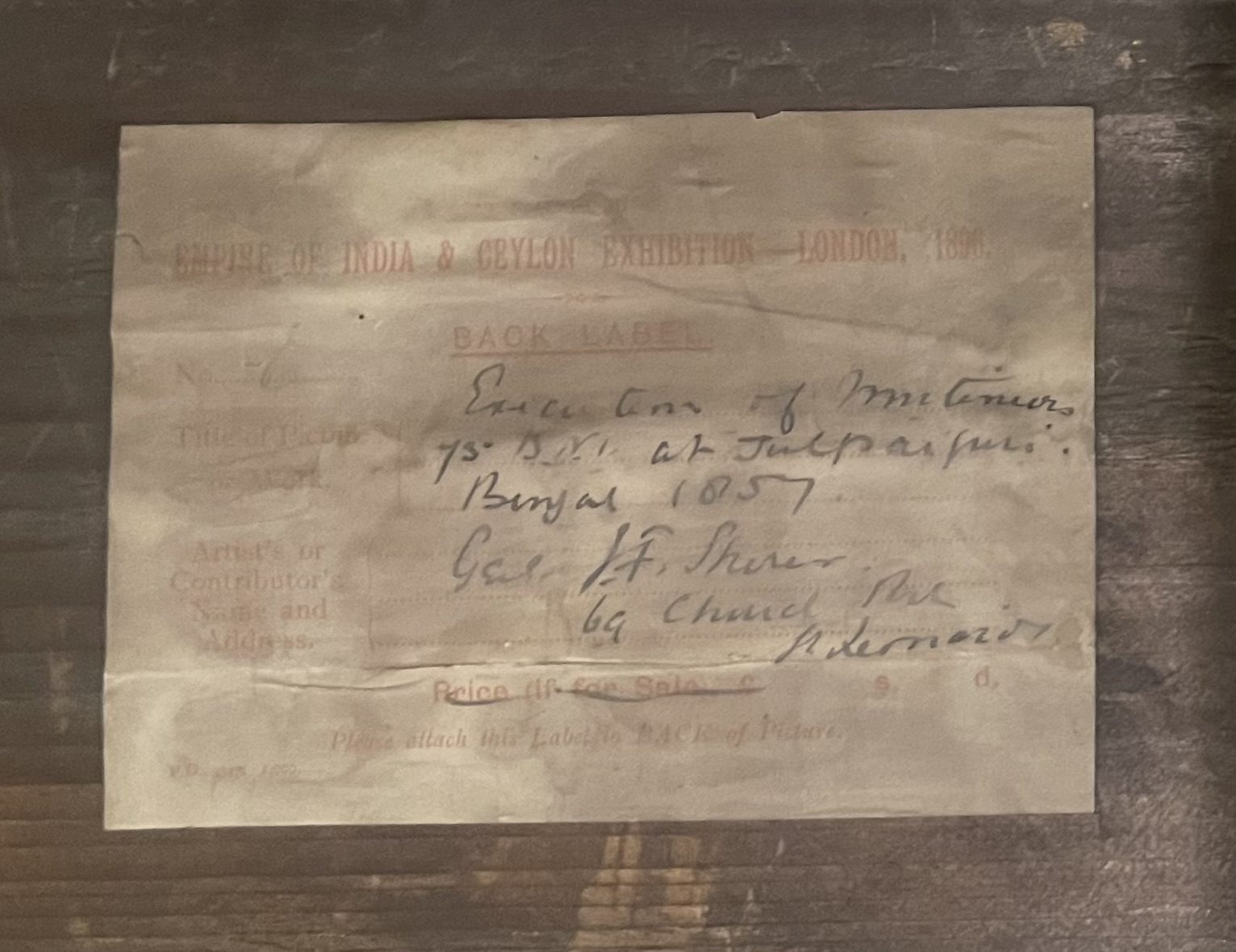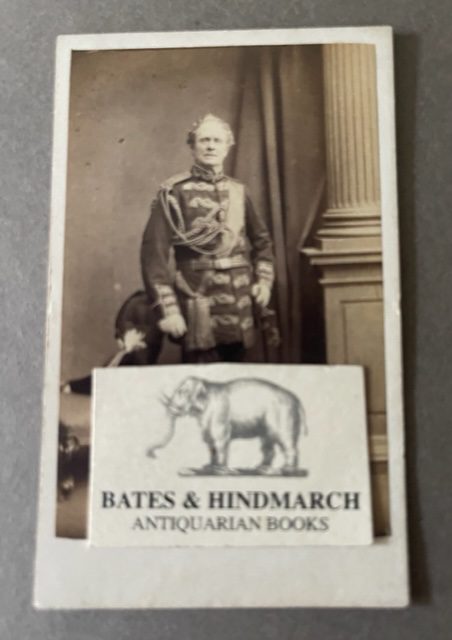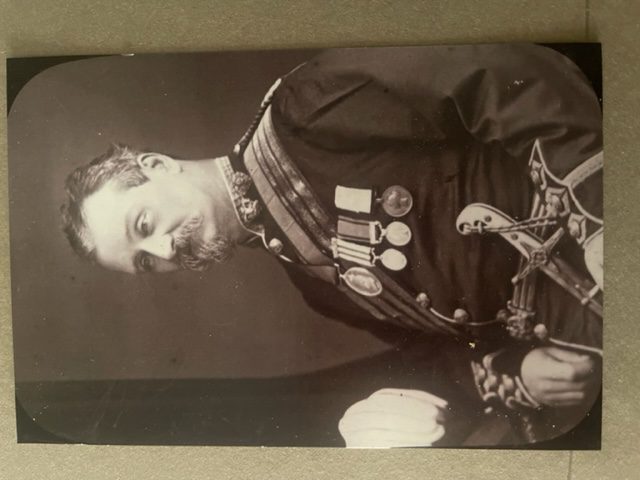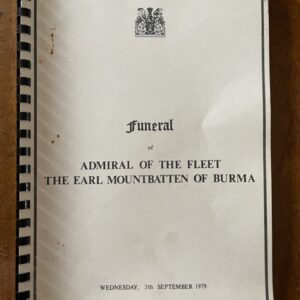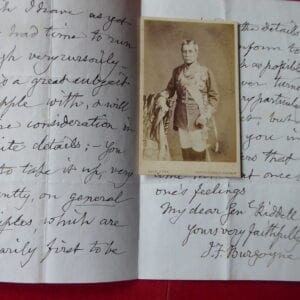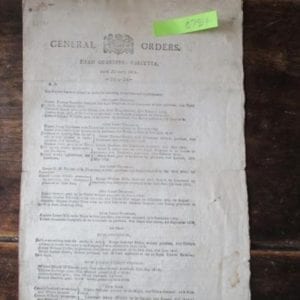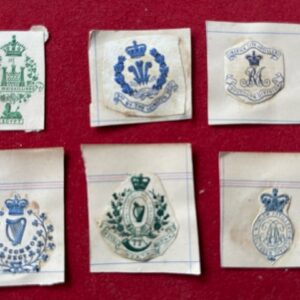INDIAN MUTINY. A historically important painting of the 73rd Bengal Native Infantry
£2,600.00
A contemporary watercolour painting, 15 x 10½ ins including the frame, in a thin plain gilt frame, titled beneath the image The 73rd Regt. N I under the command of Coll: G. M. Sherer, blowing away from two 3lbs Guns, two Mutineers of the 11th Irregular Cavalry at Jalpigoree on the 6th of December, 1857. The back of frame has a label printed EMPIRE OF INDIA & CEYLON EXHIBITION LONDON, 1896 with detail added in ink and initialled lower right N W M.: Execution of Mutineers 73rd B.N.I. at Jalpaiguri. Genl. J. F Sherer, 69 Church Rd. St. Leonards . The further printed part of the label suggesting a price for sale has been crossed out. The painting remained in the family until acquired by us some years ago. jul8/1
Although modern sensibilities find this form of execution brutal and abhorrent it was not invented by the British in India and had been used centuries before by the Mughals as a death sentence especially used in cases of mutiny as both a punishment and a stark warning to others. [ The National Army Museum makes this point in its online notes on the painting of a similar Mutiny scene by Orlando Norrie.]
The watercolour painting, probably painted by one of the officers shortly after the event from sketches made on the spot. is not of the finest artistic quality but shows the wider scene. The signing with initials suggests this was Captain N. W. Mainwaring It shows the troops, probably a company in strength, drawn up on three sides of a square with the two guns facing the river on the fourth side, mounted officers are at the corners and one in line with the guns has presumably given the order to fire. A row of tents stretches out behind the troops.
Kaye & Malleson Vol III p91 gives an account of an earlier incident dealt with by Colonel Sherer in similar fashion: The station of Jalpaiguri. on the Tístá, a hundred and seventy three miles from the capital, and in the direct route to the station of Darjiling, was garrisoned by the 73rd Regiment Native Infantry. The commanding officer was Lieutenant-Colonel G. M. Sherer. This officer had passed nearly the whole of his Indian career in the Stud Department. His knowledge of horses was profound. In managing the quadruped he had learned, too, how to deal with his master. Transferred, according to the orders then in force, on his promotion to a Lieutenant-Colonelcy, from the superintendence of the stud at Baksar to the command of a native infantry regiment, having in the intervening period of thirty years forgotten all his drill, he very soon showed his officers that great natural ability is universal in its practical application, and that, whatever be the sphere assigned to a really capable man, he will always come to the front.
Colonel Sherer had not been long in command of his regiment when the mutiny broke out. His position was full of peril. His men were, so to speak, masters of the situation. There were no Europeans within easy reach of them. There were, too, traitors in their ranks. But there also men who still trusted to the fortune of the British. It must be remembered, moreover, that to this regiment the new cartridges, regarded by others as the proselytising intentions of the Government, had not been served out. The station, likewise, was far from the high road. Still, rumours, detailed reports, letters, emissaries, found their way from time to time into the regimental lines. Alarm succeeded alarm. But Sherer and his officers were calm. They maintained a careful watch over the movement of their companies. At last there could be no doubt but that mischief was intended. Four of the most influential men in the regiment were indicated to Sherer as the heads of a conspiracy which would inevitably break out that or the following night. Sherer had them seized and tried. Their guilt was clearly proved, and they were condemned to death. The sentence, however, required the confirmation of the Major General commanding the Presidency Division. It reached him when all was couleur de rose at Barrackpore and at Calcutta. The hearts of the Major General and the Commander-in-Chief were inclined to mercy. It was considered that dismissal from the service was a sufficient punishment for mutiny with intent to murder. An order was transmitted to Sherer to “ dismiss the offenders from the service.” Before this order could reach Sherer the horizon had darkened. The Sipáhis at Dinápur had revolted; the Arab catastrophe had occurred. To temporise at such a crisis would be fatal. But Sherer had the order. He obeyed it after his fashion. Commanding a parade for the following morning, he brought out the condemned Sipáhis and had them blown away from guns. The same day he wrote officially to the Major General commanding the Presidency Division to inform him that, in obedience to his orders to dismiss the four Sipáhis from the service he had that morning dismissed them – from the muzzles of loaded guns.
This act of vigour had its effect. The rising was postponed. Two days later Eyre’s victory deprived the disaffected of all hope of success, and Sherer, continuing a combined policy of watchfulness, conciliation, and firmness, brought his regiment safely through the crisis, their arms retained, and their reputation unstained.*
*Colonel Sherer was rewarded by receiving the order of Knight Commander of the Star of India.
Major General Sir George Moyle Sherer, K.C.S.I [1800-1879] joined the Indian Army of the HEIC in 1821 and retired in 1863 by which time he was also an honorary A.D.C. to Queen Victoria [see an image of him in his uniform at that time in our illustrations. His was very much an Indian service family.
Major General Joseph Ford Sherer [1829-1901] was commissioned lieutenant in the HEIC army in 1847, fought in the Punjab Campaign and served with distinction in the Sylhet Light Infanry in the north east of India during the Mutiny. He is known as the Father of Polo having introduced the sport whic he came across in Manipur to bother officers in Calcutta.
We will provide the purchaser of this item with copies of further photographs of the two Sherers.
1 in stock

